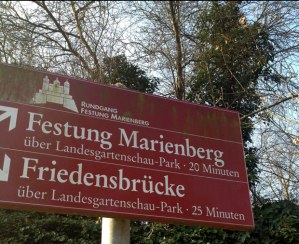Derek’s colleague is a Rhönrad gymnast!
Rhönradturnen or “wheel gymnastics” was invented in Germany, and is still mainly practiced in Germany. And a sport that Derek hasn’t heard of will naturally pique his interest! She invited us to stop by to see an introduction and try it out.
This is what happens:
You find a giant wheel based on your height, and step inside. (The wheels increase in 5cm increments). There are two handles at the top. At the bottom are wooden platforms with leather straps to secure your feet while learning so that you can hang upside-down. It is sort of a blend between floor exercises and parallel bars. And you have a spotter.
It will surprise no-one that Derek picked up Rhönrad in about 4 seconds!
And I think I could have picked it up quite a bit faster, too! But when it was my turn they kept saying, ‘push your feet Kate, push them harder’. And I thought, how much more can I push them.
An instructor came over while I was upside-down because they were concerned with my footing. Rhönrad is about suspension. It should feel less like you are hanging and more like a handstand. Otherwise gravity will take hold and you could land on your head. Ok honestly, I haven’t done a handstand in awhile!
As a final resort, to emphasize how important it was that I pressed my feet harder, they turned to some Rhönrad wisdom: “If you want to make ketchup, you need to squash the tomatoes”.
And after that I lost all focus.
Anyway, it was really awesome. The gymnasts make it look effortless, but it is a massive amount of work. And it was really quiet in there. Afterwards the trainer suggested that they begin practicing spirals, but they all wanted to go home to watch Germany’s Next Top Model 🙂
Links
+ A good example of a competition routine. (Also noted, the three ‘spectators’)
+ Must see! The dismount. It involves running up to a rolling wheel, climbing to the top, in motion, and then a sweet somersault dismount onto a landing mat. This is my fave video.
http://instagram.com/p/mGD9oXN053/
http://instagram.com/p/mGEHLUt06J/



















